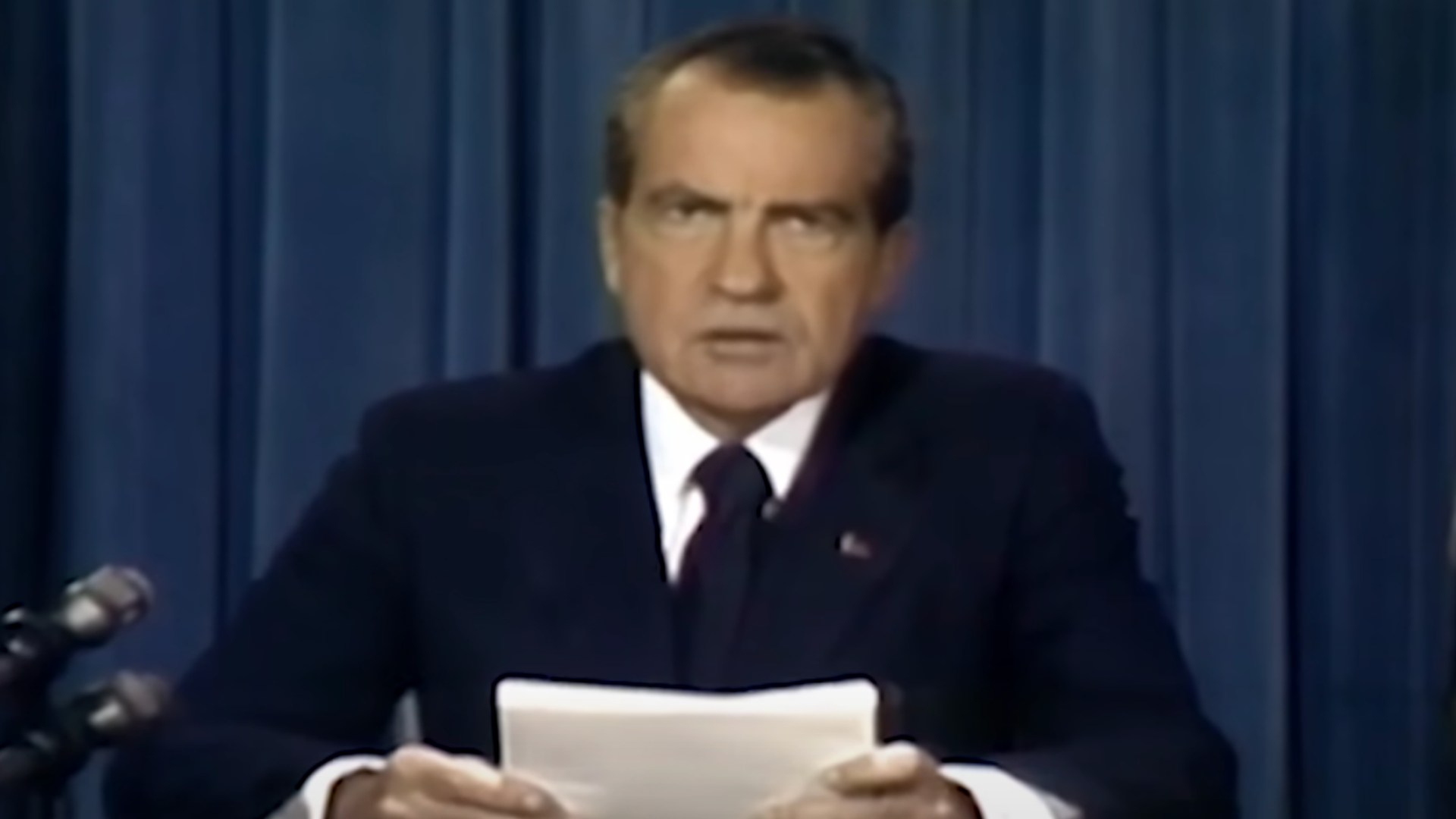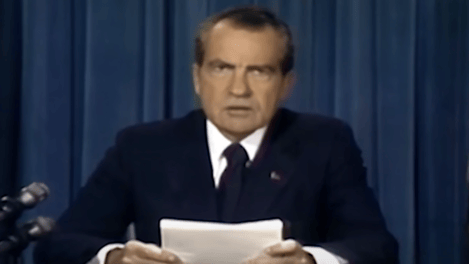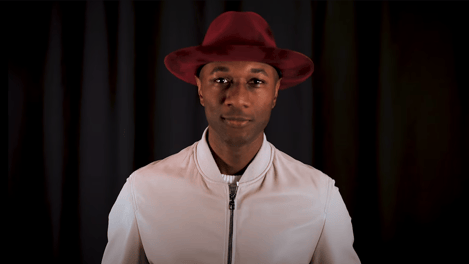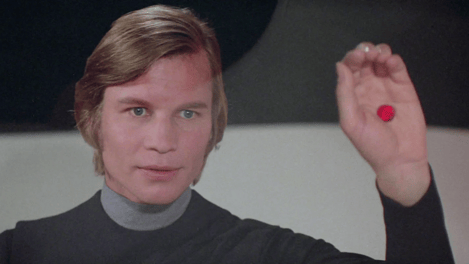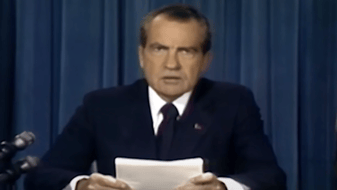
AI Voice Cloning Brings Nixon’s Unheard Moon Disaster Speech to Life
On July 20, 1969, American astronaut Neil Armstrong stepped out of the Eagle landing module and set foot on the surface of the moon, becoming the first person to walk on its surface. The next moment he uttered the famous phrase "That’s one small step for man and one giant leap for mankind." On July 21, the Apollo 11 astronauts returned to the Eagle module, closed the hatch, and took off from the surface of the moon to the spacecraft with which they would dock before heading home. On July 24, 1969, Apollo 11 successfully landed in the Pacific Ocean. It was the first of five successful flights to the moon.
But imagine if the landing on the moon’s surface would have ended completely differently…
As it turns out, the United States government had already considered such a scenario and prepared a special speech that former US president Richard Nixon was intended to read in the event of the mission’s failure. Luckily, he never had to read it.
But in 2020, the world was introduced to the short documentary film In Event of Moon Disaster. The film was honored with the Emmy Award for Interactive Media Documentary in an online ceremony on September 29, 2021. And in this documentary, we can see and hear Nixon informing the world of the disastrous failure of Apollo's moon landing mission.
How and why was it made?
The Idea
Of course, this was not a real documentary. The film was made using deepfake technology. It allowed for the creation of both an alternate reality where one of humanity’s most epic achievements ends in disaster, and a warning to viewers of the dangers of deepfakes.
“The idea, in the beginning, was to address misinformation and disinformation," said Pakinam Amer, a senior writer on the project.
"We wanted to create an alternate history to show the impact of creating a convincing version of reality, one that wasn’t necessarily true," she adds.
The film uses AI to explore an imagined reality where Neil Armstrong and Edwin “Buzz” Aldrin die while on their mission to the Moon.
The Challenge
The film is based on archival footage from NASA and takes viewers on a journey aboard Apollo 11. The film is made in a way that makes viewers think that the spacecraft malfunctioned and crashed.
Editing the video didn’t require advanced skills and technology. But the main part of the film featuring Richard Nixon’s speech had to be delivered from the White House.
The most critical part of the project was to create a realistic digitally manipulated Nixon that could speak naturally, with his own voice.
This is where Respeecher stepped in to lend a hand.
The Implementation
The film was co-directed by Francesca Panetta and Halsey Burgund at the MIT Center for Advanced Virtuality. The digital Richard Nixon was created by Tel Aviv-based Canny AI. And the voice of the 37th President was generated by Respeecher's engineers.
To ensure every detail came out in the best way possible, Respeecher needed two things:
1. Old recordings of Richard Nixon’s voice.
2. A recording of the script the President never actually delivered.
MIT hired an actor to impersonate Nixon's speaking style, pronouncing certain words longer than others and making strategic pauses to add solemnity.
Using a deep neural net, Respeecher's engineers added Nixon's vocal timber on top of the actor's performance, thus creating a deepfake audio recording. To anyone listening, the synthetic voice sounds natural and is indistinguishable from the original.
Unlike text-to-speech conversions, which often sound artificial, Respeecher's technology helps preserve emotional speech patterns.
"Our goal was to make the quality on that level where it would be satisfactory for high-demanding sound professionals in Hollywood," says Alex Serdiuk, CEO of Respeecher
The full deepfake speech can be viewed at Moondisaster.org.
Dangers of a Deepfake Reality
As previously mentioned, the project was not just an opportunity to do something really cool with advanced technology, but also to showcase some of the hidden dangers of these technologies.
Deepfakes and voice cloning raises a number of ethical questions. In Event of Moon Disaster reveals the impact of technology on the spread of disinformation among the masses.
In order to prevent such cases, Respeecher created a set of rules both they and their clients should follow.
-
Respeecher does not allow any use of our technology that can be interpreted as deceptive.
-
Respeecher does not use voices without permission when this could impact the privacy of the subject or their ability to make a living.
-
Respeecher does not provide any public API for creating new voices.
-
Respeecher works directly with clients we trust.
-
Respeecher requires written consent from voice owners.
-
Respeecher only approves projects that meet our strict standards.
-
Respeecher is developing watermarking technology that allows us to easily tell Respeecher-generated content from other content, even if it is disguised by being mixed in with other audio.
We believe that technology isn’t inherently bad. When used properly, technology can produce amazing results that inspire everyone around us.
FAQ
AI voice cloning uses voice synthesis technology to generate a person's voice, reproducing his or her voice pattern and pitch. From existing voice records, Respeecher voice AI generates sounding-real and life-like synthetic voices. The software has various applications from entertainment use to speech disability solutions.
In 2020, Respeecher voice synthesis utilized AI voice cloning to re-voice Richard Nixon speaking in In Event of Moon Disaster. Respeecher's AI voice technology achieved a natural-sounding, emotive voice through the combination of Nixon's voice recording and that of a voice actor, showcasing the use of AI voice manipulation in narrative.
Speech synthesis technology uses AI voice technology to generate speech that mimics humans. Respeecher voice AI can be used to fake voices, change accents, and even change pronunciations. The device is utilized best when helping people with speech disorders and post-laryngectomy voice restoration.
Re-enactment of history with AI voice cloning involves ethical concerns regarding consent, exploitation, and genuineness. Companies like Respeecher voice AI are involved in voice prosthesis technology and implement precautions so that voice cloning is responsibly carried out with prior approval from owners of voices, as can be seen in their AI speech enhancement policy.
Indeed, AI voice cloning is also widely employed in historical documentaries to clone public figures' voices to give them a more authentic tone. In In Event of Moon Disaster, Respeecher voice synthesis cloned Nixon's voice to illustrate how AI voiceover can be applied to recreate history in high fidelity.
AI voice cloning based on Respeecher voice synthesis has the capability of bringing back voices from history with great accuracy. Based on old recordings, the technology can provide voice tones, speech rhythms, and emotional connotations, rendering it highly suited for application in areas like AI speech improvement and voice rehabilitation after laryngectomy.
Voice AI technology has been employed to revive the voices of legendary individuals, such as Martin Luther King Jr. and John F. Kennedy. Respeecher voice AI has also been employed in voice restoration for movies and documentaries, pointing towards the future of voice synthesis technology in extracting history in an emotional way and with a touch of accuracy.
Glossary
AI Voice Cloning
A technology that replicates human voices using AI, aiding in voice restoration for laryngectomy patients, enhancing speech disability solutions and improving communication.
Voice Synthesis Technology
AI-driven innovation that replicates human speech, enabling voice restoration for laryngectomy patients, enhancing communication and improving speech disability solutions.
Historical Voice Recreation
Using voice synthesis technology and AI voice cloning, Respeecher voice synthesis revives historical figures’ voices, aiding voice restoration and speech disability solutions.
Synthetic Speech
Respeecher voice synthesis is generated by voice synthesis technology and AI voice cloning to enhance speech disability solutions and voice restoration for laryngectomy patients.
Speech Reconstruction
With voice synthesis technology and AI voice cloning, Respeecher voice synthesis helps with post-laryngectomy voice restoration and speech disability solutions.
Ethical Voice Cloning
Using voice synthesis technology and AI voice cloning, Respeecher voice synthesis ensures responsible use in speech disability solutions and voice restoration for laryngectomy patients.
Audio Deepfake
A manipulation of audio using voice synthesis technology and AI voice cloning like Respeecher voice synthesis, often used for speech disability solutions and voice restoration for laryngectomy patients.
Historical Audio Preservation
Using voice synthesis technology and AI voice cloning like Respeecher voice synthesis to restore and preserve voices, aiding in post-laryngectomy voice restoration and speech disability solutions.
Respeecher's Voice Synthesis Technology Brings Nixon's "Moon Disaster" Speech to Life
Respeecher's groundbreaking voice synthesis technology has transformed a historical what-if scenario into a powerful educational tool. By recreating President Richard Nixon's never-delivered "Moon Disaster" speech using AI voice cloning, this project demonstrates how reviving legendary voices can serve both educational purposes and raise awareness about deepfakes and digital literacy.
-
Historic Voice Restoration for Historic Figures Creates Powerful Educational Experience
Respeecher's voice synthesis expertise enabled the recreation of Nixon's voice with remarkable accuracy and authenticity. This case study in AI-driven educational campaigns showcases how advanced voice cloning technology can bridge the gap between historical documentation and immersive learning experiences. By restoring Nixon's distinctive vocal characteristics, the project provides students and educators with a compelling resource for discussing alternative historical scenarios and the importance of critical media consumption.
-
Combating Misinformation Through AI Voice Cloning Demonstration
This practical application of AI voice cloning serves as a powerful tool in the fight against misinformation. By openly demonstrating the capabilities of voice synthesis technology, the project creates awareness about the potential for deepfakes while simultaneously providing viewers with the knowledge to identify manipulated media. The "Moon Disaster" speech serves as an ideal case study for digital literacy programs, showing both the creative potential and ethical considerations of advanced AI voice technologies.
-
Respeecher's AI Voice Synthesis: Setting New Standards for Creative and Educational Applications
As demonstrated in this project, Respeecher's voice synthesis technology represents the cutting edge of what's possible in AI voice recreation. This case study highlights how educational institutions and media organizations can leverage AI projects in education to create impactful learning experiences. The Nixon speech recreation establishes a framework for responsible use of voice cloning technology that balances creative expression with ethical considerations and transparency. By participating in this initiative, Respeecher demonstrates leadership in promoting responsible AI application while showcasing the remarkable capabilities of their voice restoration technology for historic figures.
